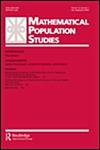Design aspects of rating scales in questionnaires
IF 1.3
3区 社会学
Q3 DEMOGRAPHY
引用次数: 4
Abstract
Since their introduction by Thurstone (1929) and Likert (1932), rating scales have been determinant in questionnaires. A rating scale usually defines the graduations out of a continuum such as agreement, intensity, frequency, or satisfaction. Respondents evaluate questions and items by marking the appropriate category, which usually concerns personal characteristics, opinions, and behavior Parducci (1983) defines responses as functions of the continuum of a rating scale. They range between the end poles and depend on the graduation of the scale; however, their quality should not be influenced by the characteristics of the rating scale. Menold and Bogner (2016) review characteristics of rating scales as follows: total number of categories, usage of middle and “do not know” options, category labeling, scale orientation (starting with a negative or a positive value, or a lower or a higher value), scale polarity (usage of verbal opposites), and visual presentation. The best design of rating scales remains controversial. Moreover, characteristics of rating scales can affect the quality of measurement (Krosnick and Fabrigar, 1997). Menold and Tausch (2016) demonstrate that different total numbers of categories have different psychometric properties and that verbalisation affects measurement. Data can no longer be compared if they have been produced from different rating scales. Graduations used in rating scales involve metric properties, because they are supposed to correspond to equal differences between categories. Orth (1982) and Westermann (1985) criticized this assumption of equidistance. The socalled “visual design” (Christian and Dillman, 2004; Tourangeau et al., 2007) was introduced to make out the influence of the graphical presentation of rating scales on response. Responses could, conciously or not, be biased by the graphical features. According to Schaefer and Dykema (2011: 912), “although past research often allows us to predict how a marginal distribution will be affected ... we are too often unable to say which version of a question is more reliable or valid.” That is why the reliability and validity of rating scales constitute an issue. This special问卷评定量表的设计
自Thurstone(1929)和Likert(1932)提出以来,评分量表一直是问卷中的决定性因素。评级量表通常定义一致性、强度、频率或满意度等连续性的分级。受访者通过标记适当的类别来评估问题和项目,该类别通常涉及个人特征、观点和行为。Parducci(1983)将回答定义为评级量表的连续体函数。它们的范围在端极之间,取决于刻度的刻度;然而,他们的质量不应该受到评分量表特征的影响。Menold和Bogner(2016)回顾了评分量表的特征如下:类别总数、中间选项和“不知道”选项的使用、类别标签、量表取向(从负值或正值开始,或从较低值或较高值开始)、量表极性(言语对立面的使用)和视觉呈现。评分表的最佳设计仍然存在争议。此外,评定量表的特征会影响测量质量(Krosnick和Fabrigar,1997)。Menold和Tausch(2016)证明,不同类别的总数具有不同的心理测量特性,言语化影响测量。如果数据是从不同的评级等级中产生的,则无法再进行比较。评级中使用的等级涉及度量属性,因为它们应该对应于类别之间的相等差异。Orth(1982)和Westermann(1985)批评了这种等距假设。所谓的“视觉设计”(Christian和Dillman,2004年;Tourangeau等人,2007年)是为了说明评级量表的图形表示对反应的影响。反应可能会因图形特征而产生偏差,无论是否合理。根据Schaefer和Dykema(2011:912)的说法,“尽管过去的研究通常允许我们预测边际分布将如何受到影响……但我们往往无法说出问题的哪个版本更可靠或更有效。”这就是为什么评级量表的可靠性和有效性构成了一个问题。这个特别的
本文章由计算机程序翻译,如有差异,请以英文原文为准。
求助全文
约1分钟内获得全文
求助全文
来源期刊

Mathematical Population Studies
数学-数学跨学科应用
CiteScore
3.20
自引率
11.10%
发文量
7
审稿时长
>12 weeks
期刊介绍:
Mathematical Population Studies publishes carefully selected research papers in the mathematical and statistical study of populations. The journal is strongly interdisciplinary and invites contributions by mathematicians, demographers, (bio)statisticians, sociologists, economists, biologists, epidemiologists, actuaries, geographers, and others who are interested in the mathematical formulation of population-related questions.
The scope covers both theoretical and empirical work. Manuscripts should be sent to Manuscript central for review. The editor-in-chief has final say on the suitability for publication.
 求助内容:
求助内容: 应助结果提醒方式:
应助结果提醒方式:


